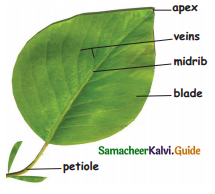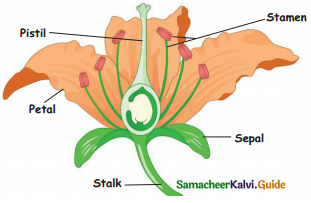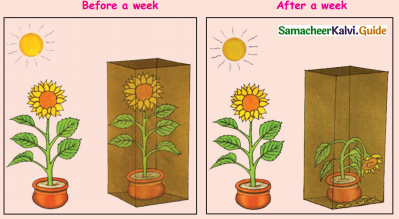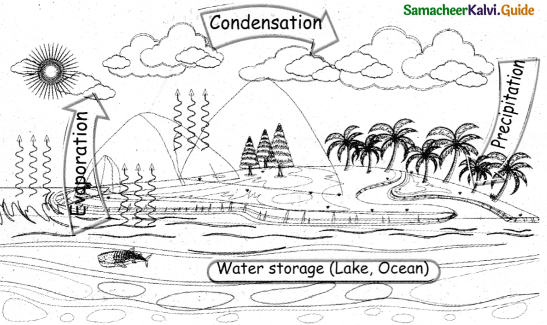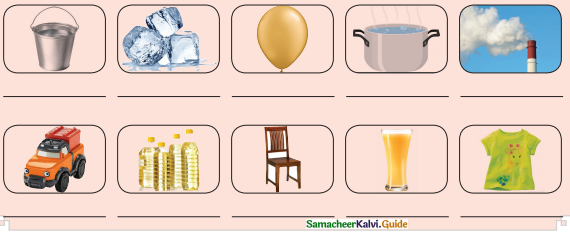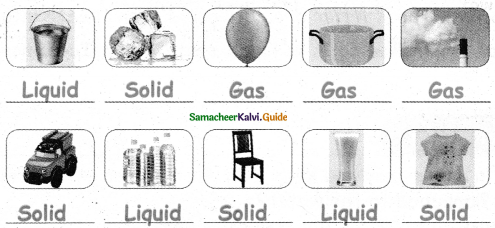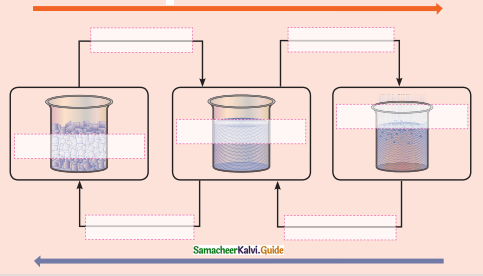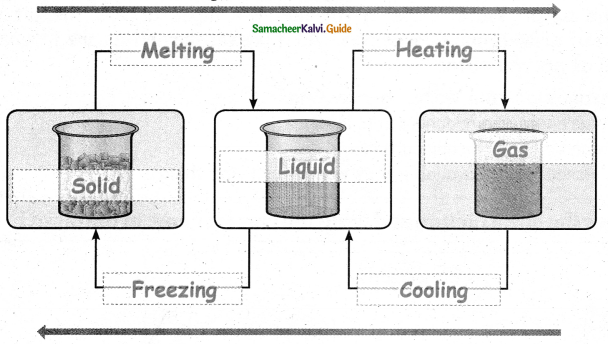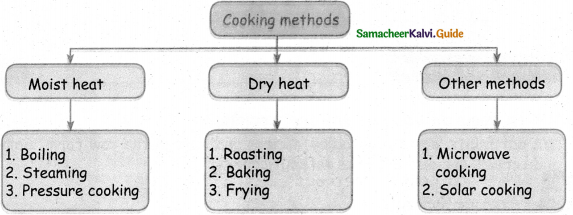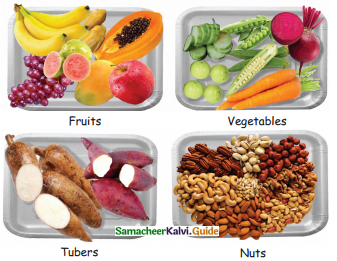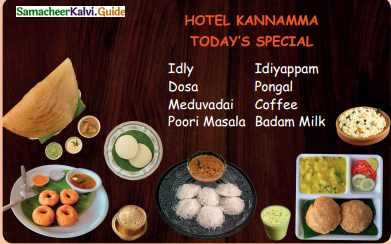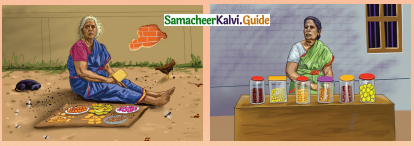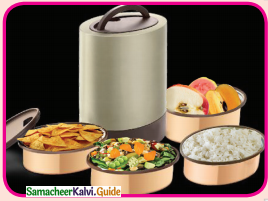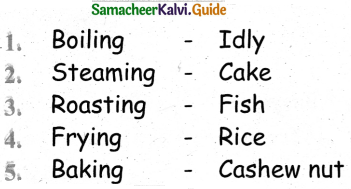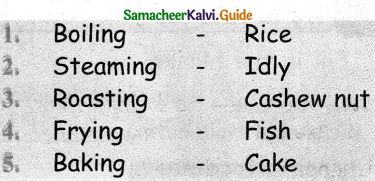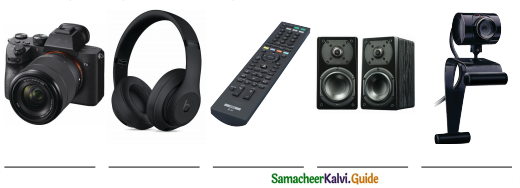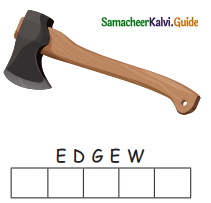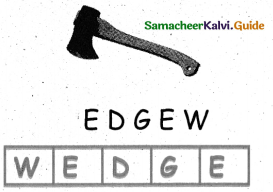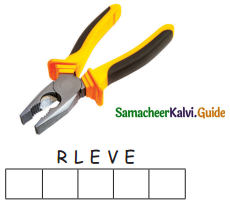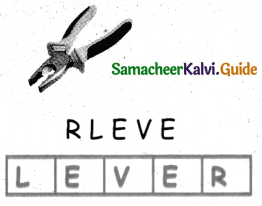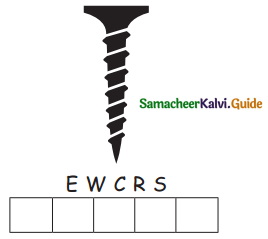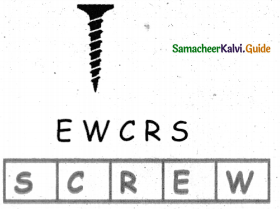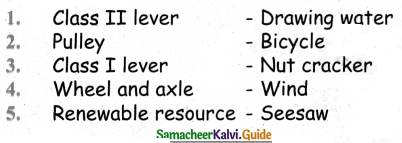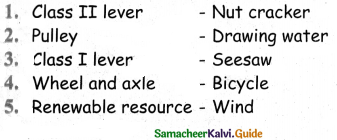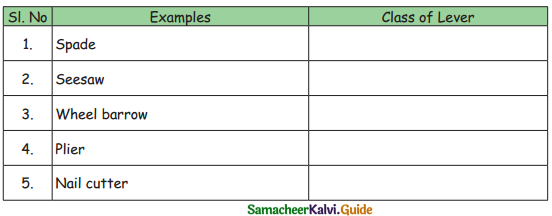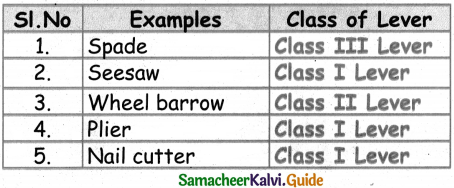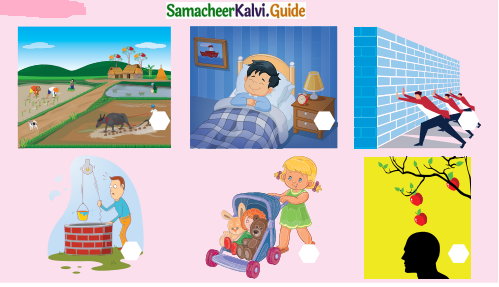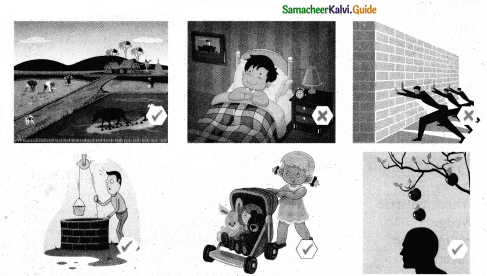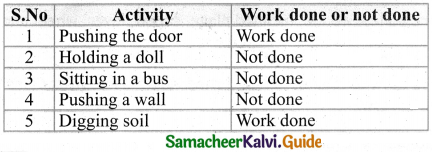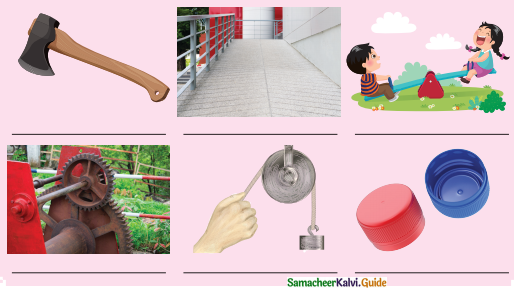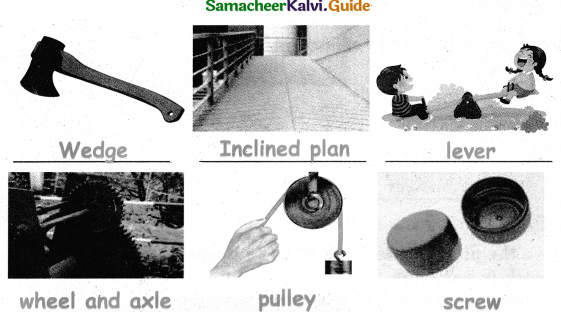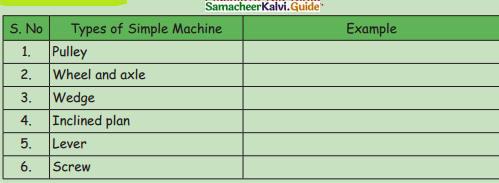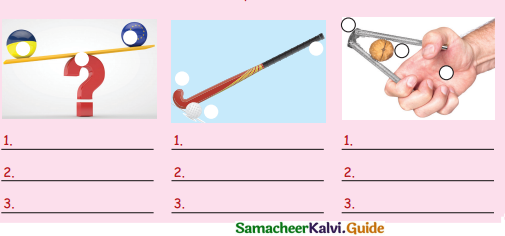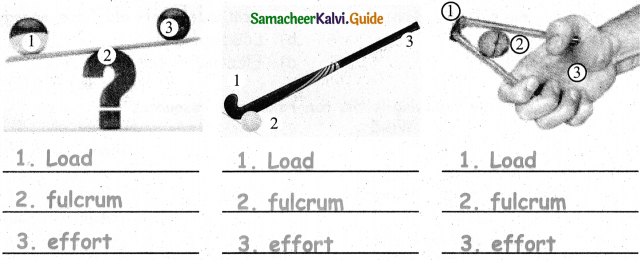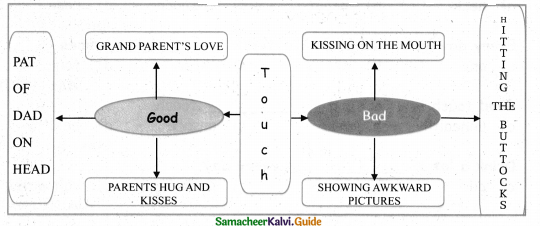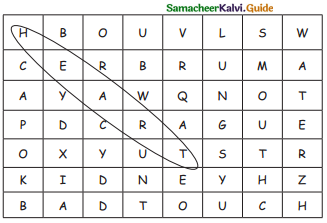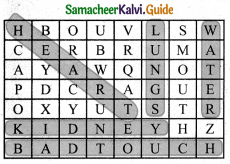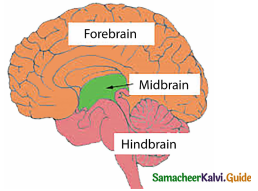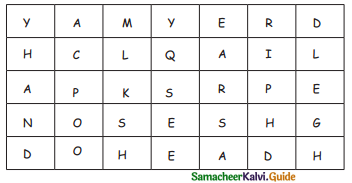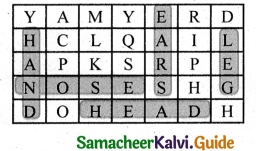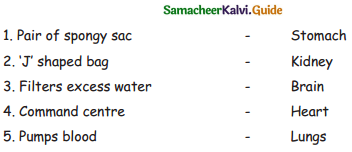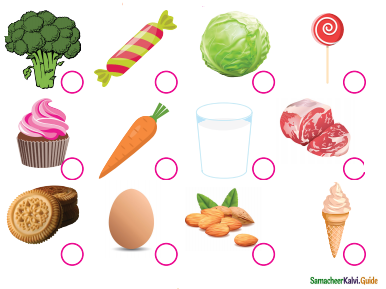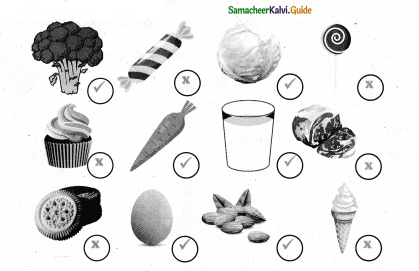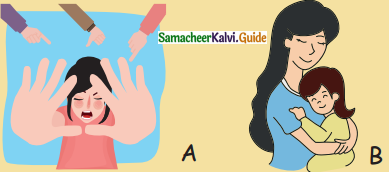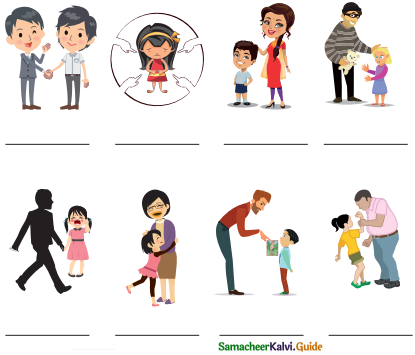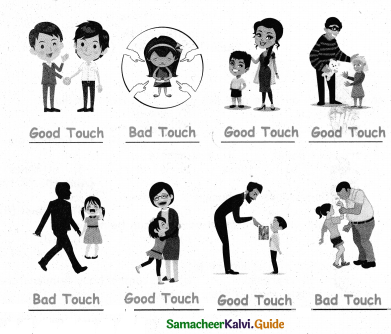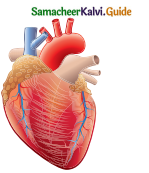Tamilnadu State Board New Syllabus Samacheer Kalvi 4th Science Guide Pdf Term 3 Chapter 1 Green Environment Text Book Back Questions and Answers, Notes.
Tamilnadu Samacheer Kalvi 4th Science Solutions Term 3 Chapter 1 Green Environment
Samacheer Kalvi 4th Science Guide Green Environment Text Book Back Questions and Answers
![]()
I. Choose the correct answer :
Question 1.
What is the first step in waste management?
(a) Waste disposal
(b) Waste separation
(c) Waste collection
Answer:
(b) Waste separation
Question 2.
Which is an example for non-biodegradable waste?
(a) Paper cup
(b) Plastic cup
(c) Coconut shell
Answer:
(b) Plastic cup
Question 3.
Picking up the waste is called ____________
(a) Waste collection
(b) The environment
(c) Litter
Answer:
(a) Waste collection
Question 4.
___________ is the first ‘R’ in the Three R’s.
(a) Reuse
(b) Reduce
(c) Recycle
Answer:
(b) Reduce
![]()
II. Fill in the blanks :
Question 1.
_____________ is an example of reusing waste. (Using old jars for pickle / Saying not to a plastic bag)
Answer:
Using old jars for pickle
Question 2.
____________ is used to make bags, dustbins and tooth brushes. (Rose / Bamboo)
Answer:
Bamboo
Question 3.
____________ is a big threat to our environment. (Plastic pollution / Light pollution)
Answer:
Plastic pollution
Question 4.
___________ is a non-recyclable item. (Glass / Multilayer plastics)
Answer:
Multilayer -plastics
![]()
III. Match the following :
Question 1.

Answer:

![]()
IV. Write True or False :
Question 1.
3R method reduces the amount of waste that goes to landfills.
Answer:
True
Question 2.
Eco-friendly material is harmful to the environment.
Answer:
False
Question 3.
Plastic bag, thermocol and multilayer plastics are recyclable.
Answer:
False
Question 4.
We should not separate our waste.
Answer:
False
![]()
V. Answer in one or two sentences :
Question 1.
What are the Three R’s?
Answer:
The three R’s stand for REDUCE, REUSE, RECYCLE.
Question 2.
What is bio-degradable waste?
Answer:
Bio-degradable waste is a form of waste, originating naturally from plant
or animal sources, which may be degraded by other living organisms.
Question 3.
Write the different steps in waste management.
Answer:
- Separation of waste
- Waste collection and transportation
- Waste recycling and composting
- Waste disposal
Question 4.
Name five items which are recyclable.
Answer:
Paper, glass, metal, cardboard and plastic covers.
![]()
VI. Answer the following :
Question 1.
How will you manage the household waste?
- Divide the waste into different waste bins.
- Each bin should have different type of wastes.
- Green for biodegradable waste, Blue for recyclable waste and Red for non-recyclable waste.
Question 2.
What are the plastic items that have been banned in Tamil Nadu?
Answer:
Plastic bags, plastic plates, water pouches, plastic straws, plastic sheets.
Question 3.
Write the benefits of recycling.
Answer:
- Old newspapers, note books and magazines are sold to a scrap dealer. They will be made into new paper.
- PET bottles are recycled into plastic threads and used to make sports T-shirts.
- Old glass bottles and broken glass pieces are melted to make new glass.
- Broken metal items like tiffin boxes and plates are melted and made into new metal products like toys.
Question 4.
What is known as eco-friendly material?
Answer:
Materials which are beneficial to the environment and do not cause harm are called eco-friendly materials
![]()
Samacheer Kalvi 4th Science Guide Green Environment In Text Questions and Answers
Activity (Text Book Page No. 65)
Question 1.
Write the waste management process in the correct order.
(Waste disposal, Waste collection and transportation, Waste separation, Waste recycling and composting)
Answer:
- Waste separation
- Waste collection & transportation
- Waste recycling A composting
- Taste disposal
![]()
Activity (Text Book Page No. 67)
Question 1.
List out four things that you can reduce, reuse and recycle at home or school.
| Reduce | Reuse |
Recycle |
Answer:
| Reduce | Reuse | Recycle |
| Use of plastic carry bags | Old clothes to clean home & cycle | Old newspapers, notebook, magazine |
| Buy food in bulk & avoid plastic bags | Use jam & pickle jars to store things. | Old glass bottles to make new bottles |
| Buy a refill instead of a pen | Clothes that look good can be donated to poor | Broken metal items to make toys |
| Turn off lights and fans when you leave a room | Reuse waste & make something new | Pet bottle to make plastic thread |
![]()
Activity (Text Book Page No. 70)
Study the images below and write down three items you have at home in each category of waste.
Question 1.
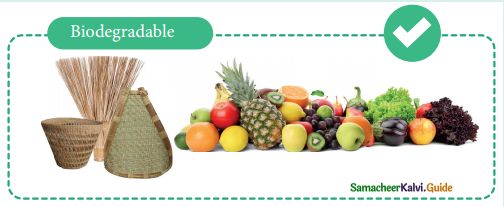
Answer:
Biodegradable: Vegetable peels, fruit peels, mat
Question 2.
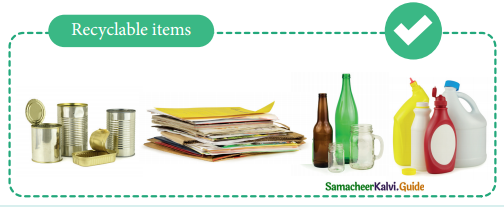
Answer:
Recyclable: Glass, metal, paper & cardboards
Question 3.
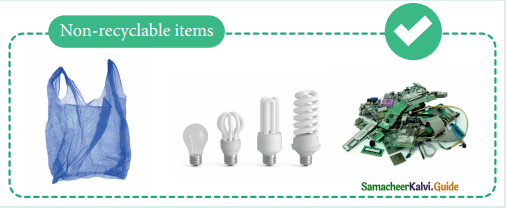
Answer:
Non-recyclable : Plastic baas, CFL lights, mixed electronic wastes
![]()
Activity (Text Book Page No. 74)
Question 1.
Write any five non-recyclable items that you use or*have seen in shop.
Answer:
CFL lights, plastic bags, mixed electronic wastes, medical wastes, polyester.
Samacheer Kalvi 4th Science Guide Green Environment Additional Questions and Answers
![]()
I. Choose the correct answers :
Question 1.
Unwanted materials pollute our ___________
(a) Land
(b) Air
(c) Both a and b
Answer:
(c) Both a and b
Question 2.
____________ is the very important step in waste management.
(a) Separation of waste
(b) Waste disposal
(c) Waste collection
Answer:
(a) Separation of waste
Question 3.
_______________ is to take materials from things you throw away and make new products with them.
(a) Reduce
(b) Reuse
(c) Recycle
Answer:
(c) Recycle
Question 4.
____________ can return back to the soil and become food for plants.
(a) Biodegradable
(b) Non-degradable
(c) Recyclable
(d) None
Answer:
(a) Biodegradable
Question 5.
_____________ is an example for eco-friendly material.
(a) Leaf plate
(b) Plastic plate
(c) Thermocol plate
Answer:
(a) Leaf plate
![]()
II. Fill in the blanks :
Question 1.
Picking up the waste is called ___________ (waste disposal / waste collection)
Answer:
waste collection
Question 2.
____________ waste can be turned into something new which is valuable. (Recyclable / Non – recyclable)
Answer:
Recyclable
Question 3.
is using something repeated for the same or for another purpose. (Reuse / Reduce)
Answer:
Reuse
Question 4.
___________ of our environment means to protect all things found in nature. (Observation / Conservation)
Answer:
Conservation
Question 5.
Plastic bags and food packaging is a _____________ item. (non-recyclable / recyclable)
Answer:
Non-recyclable
![]()
III. True or false :
Question 1.
It is best to separate waste into 3 different bins.
Answer:
True
Question 2.
Reuse is to make or use less
Answer:
False
Question 3.
Broken glass pieces are melted to make new glass.
Answer:
True
Question 4.
We should conserve our natural resources and energy
Answer:
True
![]()
IV. Answer the following :
Question 1.
What is separation of waste?
Answer:
It means to sort or divide the waste into different waste bins.
Question 2.
What is waste collection?
Answer:
Picking up the waste by our municipality or corporation is called waste collection.
Question 3.
What is transportation?
Answer:
Moving the waste from one place to another is called transportation.
Question 4.
What is compost?
Answer:
- Compost is the decayed organic material which is obtained from the biodegradable waste.
- Compost makes the soil fertile.
Question 5.
What is waste disposal or final disposal?
Answer:
The waste that cannot be recycled (non-recyclable waste) needs to be sent for final disposal.
Question 6.
What is Reduce?
Answer:
Reduce is to make or use less materials.
Question 7.
What is Reuse?
Answer:
Reuse is using a thing repeatedly for the same or for another purpose.
Question 8.
What is Recycle?
Answer:
Recycle is to take materials from things you throw away and make new products by using them.
Question 9.
Name some materials that you can at home recycle?
Answer:
- PET bottles
- Old glass bottles and broken glass pieces
- Broken metal items
![]()
V. Answer in detail :
Question 1.
Write down the eco-friendly activities.
Answer:
- Reduce your paper use by writing on both sides of every sheet.
- Stop using plastic straws.
- Use reusable bag.
- Give up chewing gum.
- Buy stainless steel bottles instead of plastic water bottles.
- Reuse containers for storing left overs.
Question 2.
What is meant by conservation of environment?
Answer:
- Conservation of environment means to protect all things found in nature.
- It means that we have to use our Earth’s natural resources (like water, soil, minerals, wildife and forests) carefully.
- Everyone can conserve the environment by good waste management habits.
